Anasazi Eft-60 NMR Instruments
These three NMR spectrometer, located in ENZI 319 and ENZI 341, have proton and carbon capabilities in 1D and 2D. The proton resonance frequency is at around 60 MHz. A wide array of experiments are
available and new ones are being prepared. These instruments are mainly used for undergraduate
teaching. They are easy to use and due to their size and permanent magnets much safer
to use than cryo-magnets. This is appreciated by many students and gives a very nice
hands-on experience for the students that hopefully will culminate in live-time affection to NMR spectroscopy.
The three Anasazi Eft-60 NMR spectrometers employ a permanent magnet that needs to
be kept at constant temperature. The temperature is kept at 29 Degree Celsius. Although
it is possible to adjust the temperature, we prefer to keep the temperature constant
to avoid temperature-related drifts of the magnet. The 1.4 T magnet weights 345 kg.
It is shielded in Mu-metal, a nickel-iron soft magnetic alloy with very high permeability,
that attenuates the magnet field to less than 1 Gauss (~ Earth's magnetic field) outside
the magnetic case. This means that the usual precautions employed for superconducting magnet users can be relaxed with these magnets.
The magnets offer built-in vibration damping using isobutylene rubber absorbers so
that they can be located in vibrationally noisy environments (like an undergraduate
laboratory). The spectrometers do not have a frequency lock and shimming is done (usually
automatically) on a proton signal. To compensate for long term drift for long term
experiments, a method called BAPR (Block Average with Peak Registration) is employed.
It divides the acquisition into smaller blocks such that each block is short enough
that data quality is not reduced due to long term drift.
The instrument is portable, but of course, it should only be moved by authorized personnel. In the picture below the magnet is in front. In the back left with the label "Eft-60" is the electronics such as power supply, amplifiers. Next to it is a computer that operates the machine, and a printer. These are all located on a table with wheels. The magnet is on wheels as well.
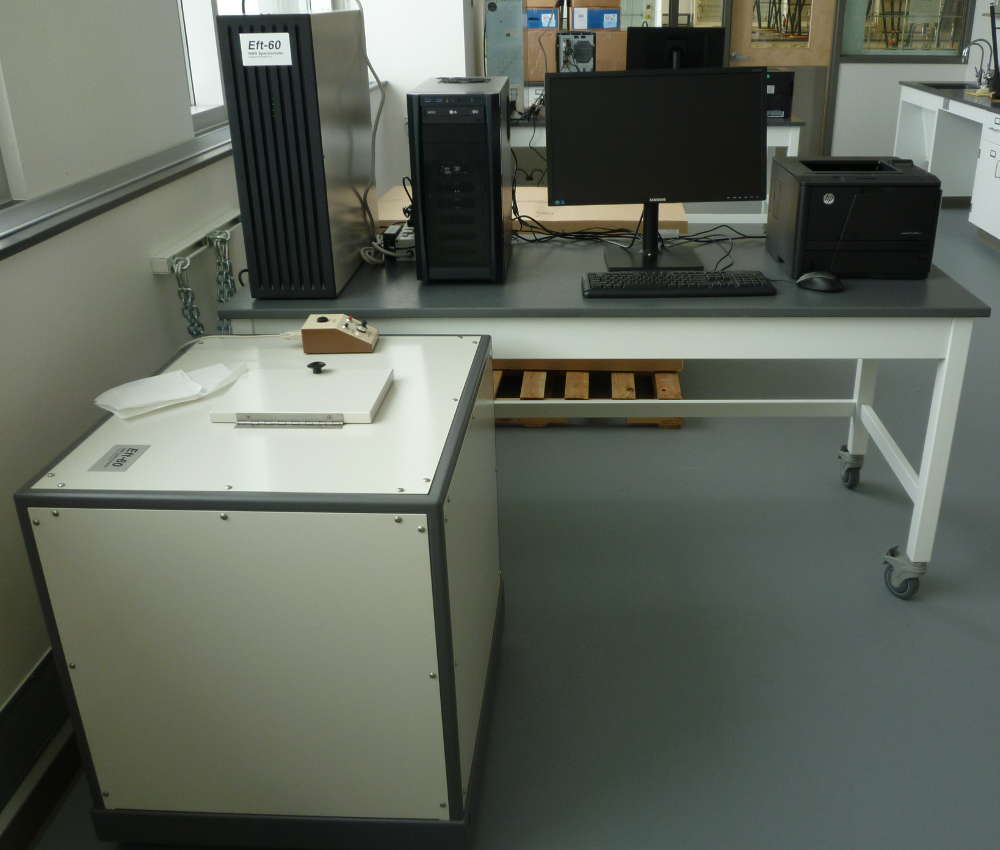
A view from the side:
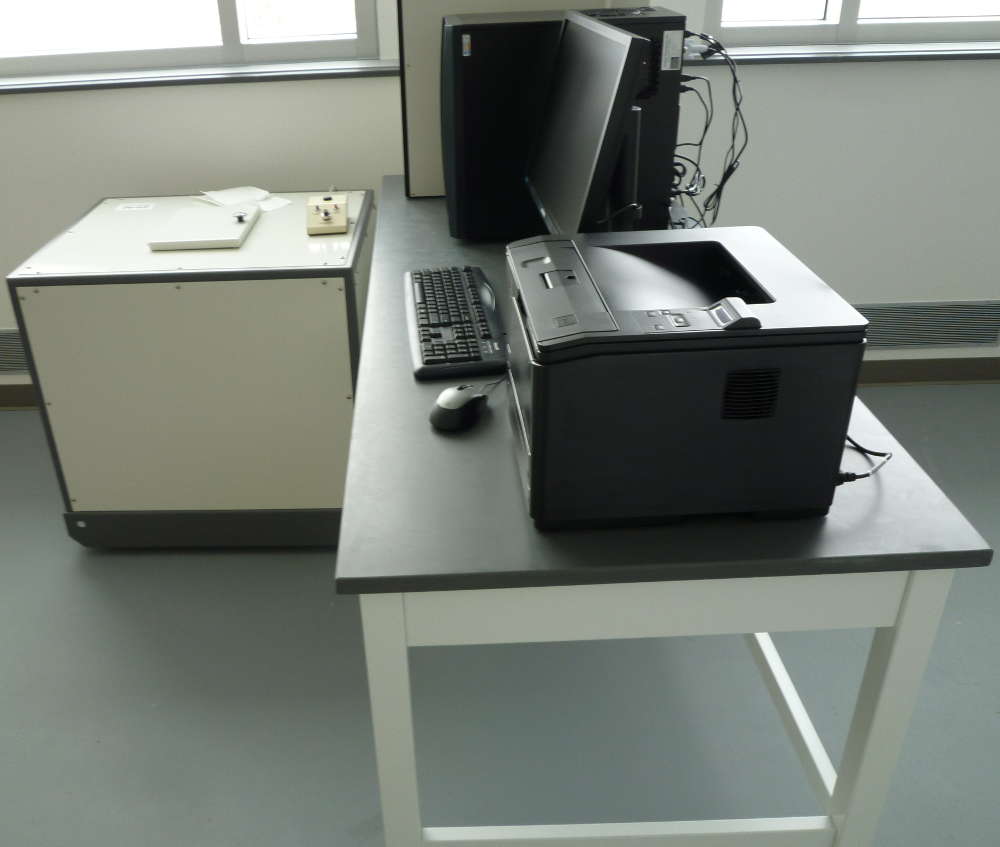
And a view from the back:
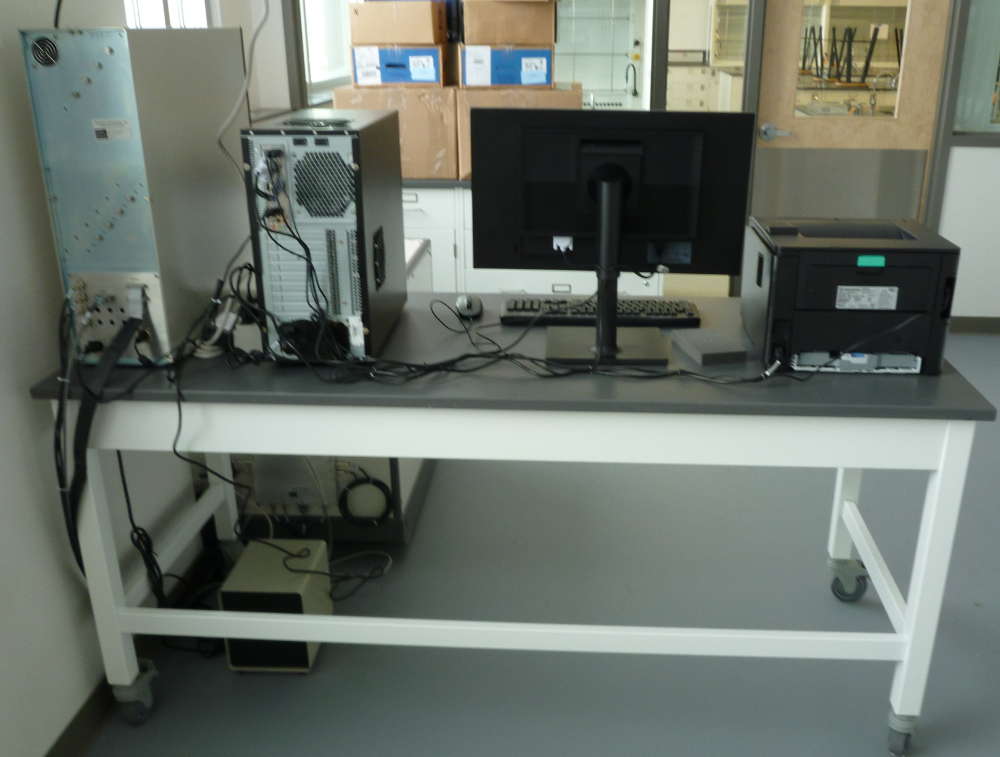
A close-up of the permanent magnet:
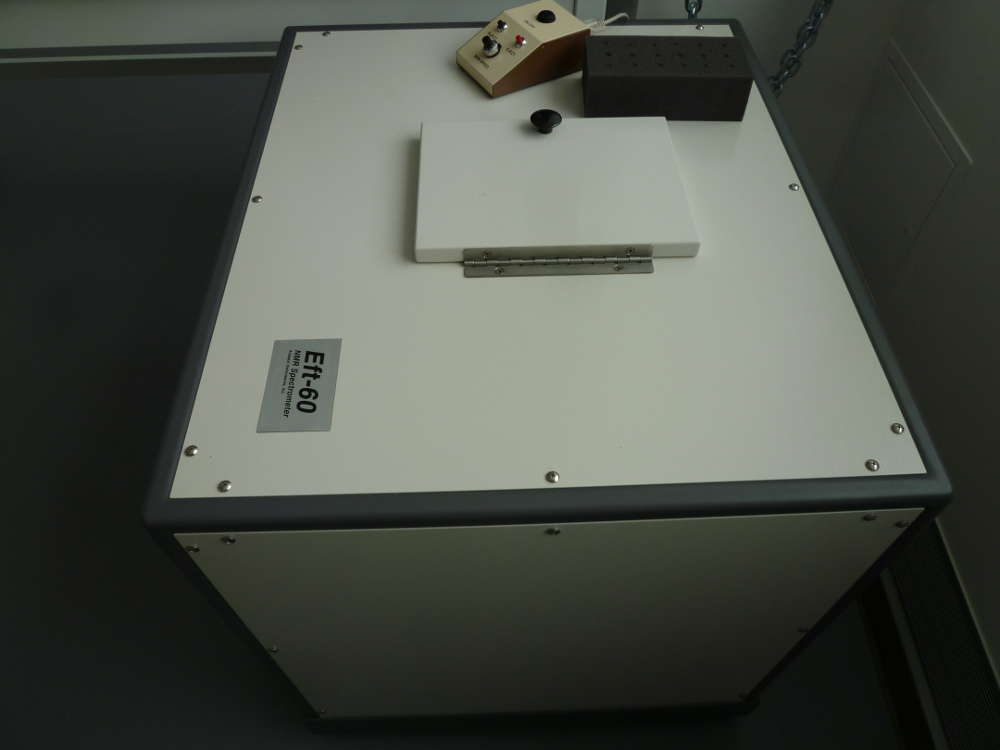
The center lid can be opened:
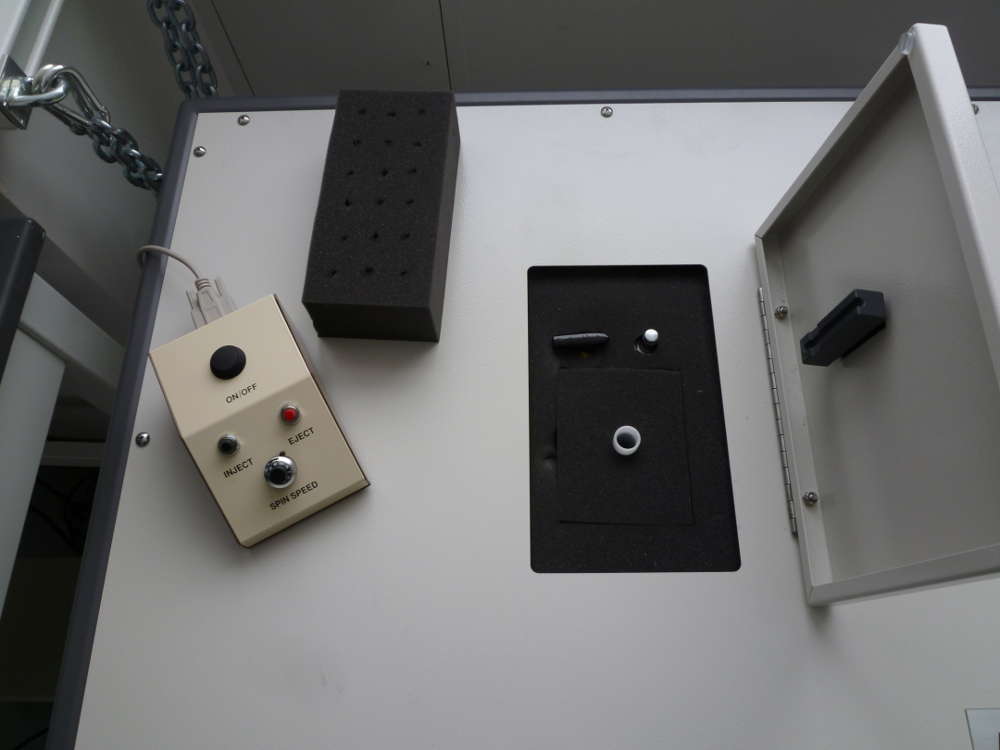
It reveals the tube that accepts the sample (a standard 5 mm NMR tube).The sample can be lowered (ejected) or lowered (injected) into the magnet by the switch on the left. The air is supplied by a pump that is below the table:
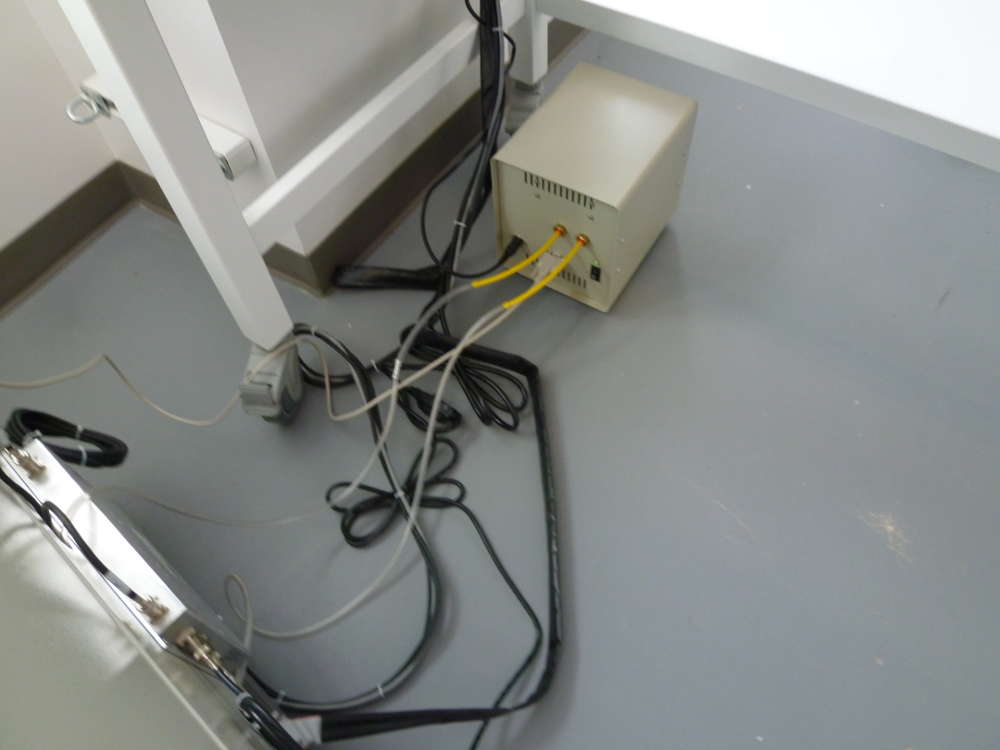
The pump also supplies the air to rotate the sample.
The tube is part of the NMR probe of the system. There are coils for 1H and 13C. That makes the Anasazi Eft-60 capable of detecting 1H and 13C. The software on the computer allows operation in 1D and 2D, similar to the big brothers such as NMR-300, NMR-400, NMR-600. Thus, the student can get a feeling about what it feels like to have a top of the line research instrument. Typical experiments include one-dimensional 1H and 13C spectra, two-dimensional COSY-spectra (1H-1H), solvent suppression, inversion recovery for longitudinal relaxation (T1), CPMG for transverse relaxation (T2), kinetics and reaction monitoring, carbon multiplicity using DEPT and APT experiments, CH-correlation spectra using HETCOR.
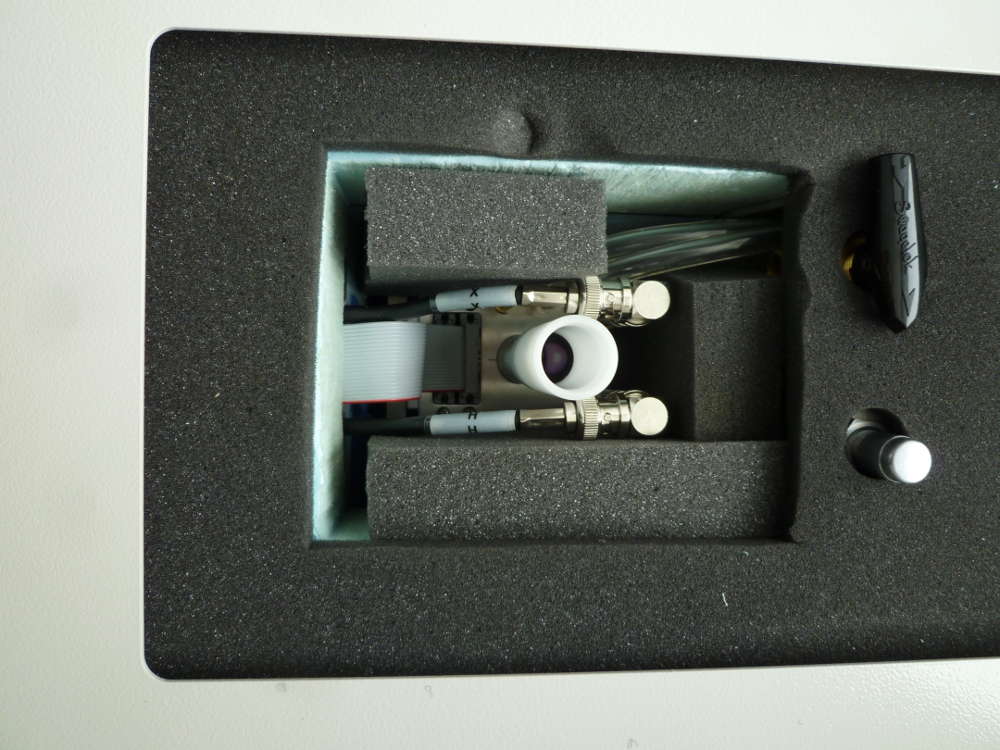
Page created by Alexander Goroncy.

